70458-96-7
| 中文名 | 氟哌酸 |
|---|---|
| 英文名 | norfloxacin |
| 中文别名 |
1-乙基-6-氟-1,4-二氢-4-氧代-7-(1-哌嗪基)-3-喹啉羧酸
诺氟沙星 |
| 英文别名 |
Zomxin
1-Ethyl-6-fluoro-4-oxo-7-(1-piperazinyl)-1,4-dihydro-3-quinolinecarboxylic acid Fulgram Barazan NORFLOXACINE CHIBROXIN Noflo Utinor EINECS 274-614-4 Nolicin Sebercim Chibroxol Zoroxin 4803P am-715 MFCD08060466 1-ethyl-6-fluoro-4-oxo-7-piperazinyl-1,4-dihydro-quinoline-3-carboxylic acid Norfloxacin 1-ethyl-6-fluoro-4-oxo-7-piperazin-1-yl-1,4-dihydroquinoline-3-carboxylic acid Floxacin 1-ethyl-6-fluoro-7-piperazino-4-oxo-1,4-dihydro-quinoline-3-carboxylic acid Noroxin Lexinor 1-ethyl-6-fluoro-4-oxo-7-(piperazin-1-yl)-1,4-dihydroquinoline-3-carboxylic acid |
| 描述 | Norfloxacin是广谱抗生素,能通过结合DNA旋转酶抑制革兰氏阳性和阴性菌。 |
|---|---|
| 相关类别 | |
| 参考文献 |
| 密度 | 1.3±0.1 g/cm3 |
|---|---|
| 沸点 | 555.8±50.0 °C at 760 mmHg |
| 熔点 | 220°C |
| 分子式 | C16H18FN3O3 |
| 分子量 | 319.331 |
| 闪点 | 289.9±30.1 °C |
| 精确质量 | 319.133209 |
| PSA | 74.57000 |
| LogP | 0.82 |
| 外观性状 | 灰白色至淡黄色结晶粉末 |
| 蒸汽压 | 0.0±1.6 mmHg at 25°C |
| 折射率 | 1.595 |
| 储存条件 | 存放在密封容器内,并放在阴凉,干燥处,2-8 ºC保存。 |
| 稳定性 | 常温常压下稳定,远离氧化剂。 |
| 分子结构 | 1、 摩尔折射率:80.70 2、 摩尔体积(cm3/mol):237.4 3、 等张比容(90.2K):641.2 4、 表面张力(dyne/cm):53.1 5、 极化率(10-24cm3):31.99 |
| 计算化学 | 1.疏水参数计算参考值(XlogP):无 2.氢键供体数量:2 3.氢键受体数量:7 4.可旋转化学键数量:3 5.互变异构体数量:无 6.拓扑分子极性表面积72.9 7.重原子数量:23 8.表面电荷:0 9.复杂度:519 10.同位素原子数量:0 11.确定原子立构中心数量:0 12.不确定原子立构中心数量:0 13.确定化学键立构中心数量:0 14.不确定化学键立构中心数量:0 15.共价键单元数量:1 |
| 更多 | 1. 性状:类白色至淡黄色结晶性粉末。无臭,味微苦。 2. 密度(g/mL,25/4℃):未确定 3. 相对蒸汽密度(g/mL,空气=1):未确定 4. 熔点(ºC):227-228 5. 沸点(ºC,常压):556 6. 沸点(ºC,5.2kPa):未确定 7. 折射率:未确定 8. 闪点(ºC):290 9. 比旋光度(º):未确定 10. 自燃点或引燃温度(ºC):未确定 11. 蒸气压(kPa,25ºC):未确定 12. 饱和蒸气压(kPa,60ºC):未确定 13. 燃烧热(KJ/mol):未确定 14. 临界温度(ºC):未确定 15. 临界压力(KPa):未确定 16. 油水(辛醇/水)分配系数的对数值:未确定 17. 爆炸上限(%,V/V):未确定 18. 爆炸下限(%,V/V):未确定 19. 溶解性:易溶于水,水中溶解度为10%(g/ml,25℃),极微溶于乙醇,几乎不溶于甲醇,氯仿。 |
|
Section I.Chemical Product and Company Identification Chemical Name Norfloxacin Portland OR Synonym3-Quinolinecarboxylic acid, 1-ethyl-6-fluoro-1,4- dihydro-4-oxo-7-(1-piperazinyl)- (CA INDEX NAME); 1-Ethyl-6-fluoro-1,4-dihydro-4-oxo-7-(1-piperazinyl)- 3-quinolinecarboxylic Acid
Chemical FormulaC16H18FN3O3 CAS Number70458-96-7 Section II.Composition and Information on Ingredients Toxicology Data Chemical NameCAS Number Percent (%)TLV/PEL Min. 98.0 Not available.Rat LD50 (oral) >4 gm/kg Norfloxacin70458-96-7 (HPLC,T)Mouse LD50 (intraperitoneal) 1064 mg/kg Rat LD50 (intravenous) 245 mg/kg Section III. Hazards Identification No specific information is available in our data base regarding the toxic effects of this material for humans. However, Acute Health Effects exposure to any chemical should be kept to a minimum. Skin and eye contact may result in irritation. May be harmful if inhaled or ingested. Always follow safe industrial hygiene practices and wear proper protective equipment when handling this compound. CARCINOGENIC EFFECTS : Not available. Chronic Health Effects MUTAGENIC EFFECTS : Not available. TERATOGENIC EFFECTS : Not available. DEVELOPMENTAL TOXICITY: Reproductive effects. Rat TDLo Oral 1375 mg/kg, female 7-17 days of pregnancy Toxic Effects: Specific Developmental Abnormalities - Musculoskeletal system Effects on Newborn - Behavioral Rabbit Oral 1300 mg/kg, female 6-18 days of pregnancy Toxic Effects: Effects on Fertility - Litter size Effects on Embryo or Fetus - Fetotoxicity Effects on Embryo or Fetus - Fetal death Rabbit Oral 1625 mg/kg, female 13 days prior to mating Toxic Effects: Maternal Effects - Ovaries, fallopian tubes Maternal Effects - Uterus, cervix, vagina Repeated or prolonged exposure to this compound is not known to aggravate existing medical conditions. Section IV.First Aid Measures Eye ContactCheck for and remove any contact lenses. In case of contact, immediately flush eyes with plenty of water for at least 15 minutes. Get medical attention. Skin ContactIn case of contact, immediately flush skin with plenty of water. Remove contaminated clothing and shoes. Wash clothing before reuse. Thoroughly clean shoes before reuse. Get medical attention. InhalationIf the victim is not breathing, perform mouth-to-mouth resuscitation. Loosen tight clothing such as a collar, tie, belt or waistband. If breathing is difficult, oxygen can be administered. Seek medical attention if respiration problems do not improve. INDUCE VOMITING by sticking finger in throat. Lower the head so that the vomit will not reenter the mouth and throat. Ingestion Loosen tight clothing such as a collar, tie, belt or waistband. If the victim is not breathing, perform mouth-to-mouth resuscitation. Examine the lips and mouth to ascertain whether the tissues are damaged, a possible indication that the toxic material was ingested; the absence of such signs, however, is not conclusive. Continued on Next Page Norfloxacin Section V.Fire and Explosion Data Not available. FlammabilityMay be combustible at high temperature.Auto-Ignition Flammable LimitsNot available. Flash PointsNot available. Combustion ProductsThese products are toxic carbon oxides (CO, CO2), nitrogen oxides (NO, NO2), halogenated compounds. WARNING: Highly toxic HF gas is produced during combustion. Fire HazardsNot available. Risks of explosion of the product in presence of mechanical impact: Not available. Explosion Hazards Risks of explosion of the product in presence of static discharge: Not available. Fire Fighting Media SMALL FIRE: Use DRY chemical powder. LARGE FIRE: Use water spray, fog or foam. DO NOT use water jet. and Instructions Consult with local fire authorities before attempting large scale fire-fighting operations. Section VI.Accidental Release Measures Spill CleanupHygroscopic material. Use a shovel to put the material into a convenient waste disposal container. Finish cleaning the spill by rinsing any Instructions contaminated surfaces with copious amounts of water. Consult federal, state, and/or local authorities for assistance on disposal. Section VII. Handling and Storage HYGROSCOPIC. Keep away from heat. Mechanical exhaust required. When not in use, tightly seal the container and store Handling and Storage in a dry, cool place. Avoid excessive heat and light. Do not breathe dust. Information Always store away from incompatible compounds such as oxidizing agents, moisture. Section VIII. Exposure Controls/Personal Protection Engineering ControlsUse process enclosures, local exhaust ventilation, or other engineering controls to keep airborne levels below recommended exposure limits. If user operations generate dust, fume or mist, use ventilation to keep exposure to airborne contaminants below the exposure limit. Personal ProtectionSplash goggles. Lab coat. Dust respirator. Boots. Gloves. Suggested protective clothing might not be sufficient; consult a specialist BEFORE handling this product. Be sure to use a MSHA/NIOSH approved respirator or equivalent. Not available. Exposure Limits Section IX. Physical and Chemical Properties Physical state @ 20°CSolid. (Very pale yellow ~ pale yellow,SolubilitySolubility at 25°C (mg/ml): water 0.28; crystal ~ powder.) methanol 0.98; ethanol 1.9; acetone 5.1; chloroform 5.5; diethyl ether 0.1; benzene Not available. Specific Gravity 0.15; ethyl acetate 0.94; octyl alcohol 5.1; glacial acetic acid 340. Solubility in water is pH dependent, increasing sharply at pH <5 or at pH >10. Molecular Weight319.33Partition CoefficientLOG Pow: 0.46 Boiling PointNot available.Not applicable. Vapor Pressure Melting Point221°C (429.8°F)Vapor DensityNot available. Not available.Not available. Refractive IndexVolatility Critical TemperatureNot available.OdorNot available. Not available.Not available. ViscosityTaste Section X.Stability and Reactivity Data This material is stable if stored under proper conditions. (See Section VII for instructions) Stability Conditions of InstabilityAvoid excessive heat and light. Hygroscopic; keep container tightly closed. IncompatibilitiesReactive with oxidizing agents, moisture. Continued on Next Page Norfloxacin Section XI. Toxicological Information RTECS NumberVB2005000 Eye Contact. Ingestion. Inhalation. Routes of Exposure Toxicity DataRat LD50 (oral) >4 gm/kg Mouse LD50 (intraperitoneal) 1064 mg/kg Rat LD50 (intravenous) 245 mg/kg Chronic Toxic EffectsCARCINOGENIC EFFECTS : Not available. MUTAGENIC EFFECTS : Not available. TERATOGENIC EFFECTS : Not available. DEVELOPMENTAL TOXICITY: Reproductive effects. Rat TDLo Oral 1375 mg/kg, female 7-17 days of pregnancy Toxic Effects: Specific Developmental Abnormalities - Musculoskeletal system Effects on Newborn - Behavioral Rabbit Oral 1300 mg/kg, female 6-18 days of pregnancy Toxic Effects: Effects on Fertility - Litter size Effects on Embryo or Fetus - Fetotoxicity Effects on Embryo or Fetus - Fetal death Rabbit Oral 1625 mg/kg, female 13 days prior to mating Toxic Effects: Maternal Effects - Ovaries, fallopian tubes Maternal Effects - Uterus, cervix, vagina Repeated or prolonged exposure to this compound is not known to aggravate existing medical conditions. Acute Toxic EffectsNo specific information is available in our data base regarding the toxic effects of this material for humans. However, exposure to any chemical should be kept to a minimum. Skin and eye contact may result in irritation. May be harmful if inhaled or ingested. Always follow safe industrial hygiene practices and wear proper protective equipment when handling this compound. Section XII.Ecological Information Not available. Ecotoxicity Not available. Environmental Fate Section XIII. Disposal Considerations Waste DisposalRecycle to process, if possible. Consult your local regional authorities. You may be able to dissolve or mix material with a combustible solvent and burn in a chemical incinerator equipped with an afterburner and scrubber system. Observe all federal, state and local regulations when disposing of the substance. Section XIV. Transport Information DOT ClassificationNot a DOT controlled material (United States). PIN NumberNot applicable. Proper Shipping NameNot applicable. Packing Group (PG)Not applicable. DOT Pictograms Section XV. Other Regulatory Information and Pictograms TSCA Chemical InventoryThis product is NOT on the EPA Toxic Substances Control Act (TSCA) inventory. The following notices are required by 40 CFR 720.36 (C) for those products not on the inventory list: (EPA) (i) These products are supplied solely for use in research and development by or under the supervision of a technically qualified individual as defined in 40 CFR 720.0 et sec. (ii) The health risks of these products have not been fully determined. Any information that is or becomes available will be supplied on an MSDS sheet. WHMIS ClassificationOn DSL. (Canada) EINECS Number (EEC) 274-614-4 EEC Risk StatementsNot available. Japanese Regulatory Data Not available. Continued on Next Page SECTION 16 - ADDITIONAL INFORMATION N/A |
|
毒理学数据: 小鼠,大鼠LD50(mg/kg):全部>4000经口;全部1500皮下注射;470,>500肌内注射;220,270静脉注射。 CHEMICAL IDENTIFICATION
HEALTH HAZARD DATAACUTE TOXICITY DATA
MUTATION DATA
|
| 个人防护装备 | Eyeshields;Gloves;type N95 (US);type P1 (EN143) respirator filter |
|---|---|
| 危害码 (欧洲) | Xn: Harmful; |
| 风险声明 (欧洲) | R20/21/22 |
| 安全声明 (欧洲) | 26-37/39 |
| 危险品运输编码 | NONH for all modes of transport |
| WGK德国 | 2 |
| RTECS号 | VB2005000 |
| 海关编码 | 2933990090 |
| 上游产品 8 | |
|---|---|
| 下游产品 10 | |
| 海关编码 | 2933990090 |
|---|---|
| 中文概述 | 2933990090. 其他仅含氮杂原子的杂环化合物. 增值税率:17.0%. 退税率:13.0%. 监管条件:无. 最惠国关税:6.5%. 普通关税:20.0% |
| 申报要素 | 品名, 成分含量, 用途, 乌洛托品请注明外观, 6-己内酰胺请注明外观, 签约日期 |
| Summary | 2933990090. heterocyclic compounds with nitrogen hetero-atom(s) only. VAT:17.0%. Tax rebate rate:13.0%. . MFN tariff:6.5%. General tariff:20.0% |



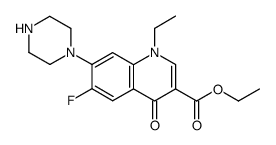
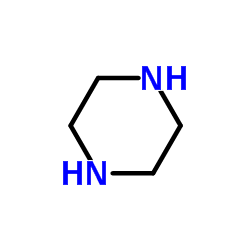


![1-Ethyl-6-fluoro-1,4-dihydro-7-[4-[(ethoxycarbonyl)methyl]-1-piperazinyl]-4-oxoquinoline-3-carboxylic Acid结构式](https://image.chemsrc.com/caspic/182/118476-20-3.png)
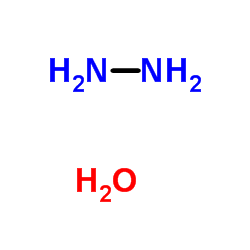
![1-ethyl-6-fluoro-1,4-dihydro-7-[4-(1-methyl-2-oxopropyl)-1-piperazinyl]-4-oxoquinoline-3-carboxylic acid结构式](https://image.chemsrc.com/caspic/073/103258-03-3.png)
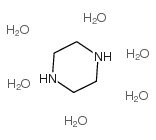
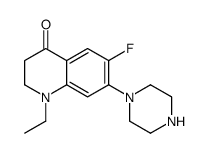
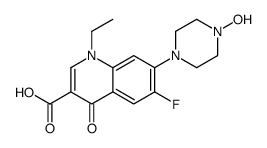
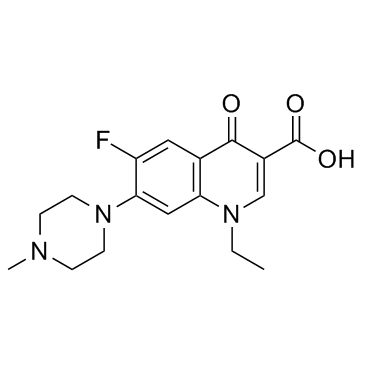

![1-ethyl-6-fluoro-4-oxo-7-[4-(2-oxopropyl)piperazin-1-yl]quinoline-3-carboxylic acid结构式](https://image.chemsrc.com/caspic/182/103175-73-1.png)
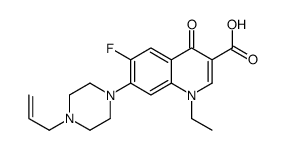

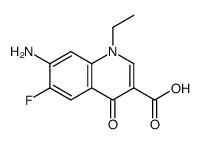
![norfloxacin ep impurity b norfloxacin ethylenediamine analog 7-[(2-aminoethyl)amino]-1-ethyl-6-fluoro-4-oxo-1,4-dihydroquinoline-3-carboxylic acid hcl结构式](https://image.chemsrc.com/caspic/124/75001-77-3.png)
![1-ethyl-6-fluoro-7-[4-[(5-methyl-2-oxo-1,3-dioxol-4-yl)methyl]piperazin-1-yl]-4-oxoquinoline-3-carboxylic acid结构式](https://image.chemsrc.com/caspic/133/85195-76-2.png)

